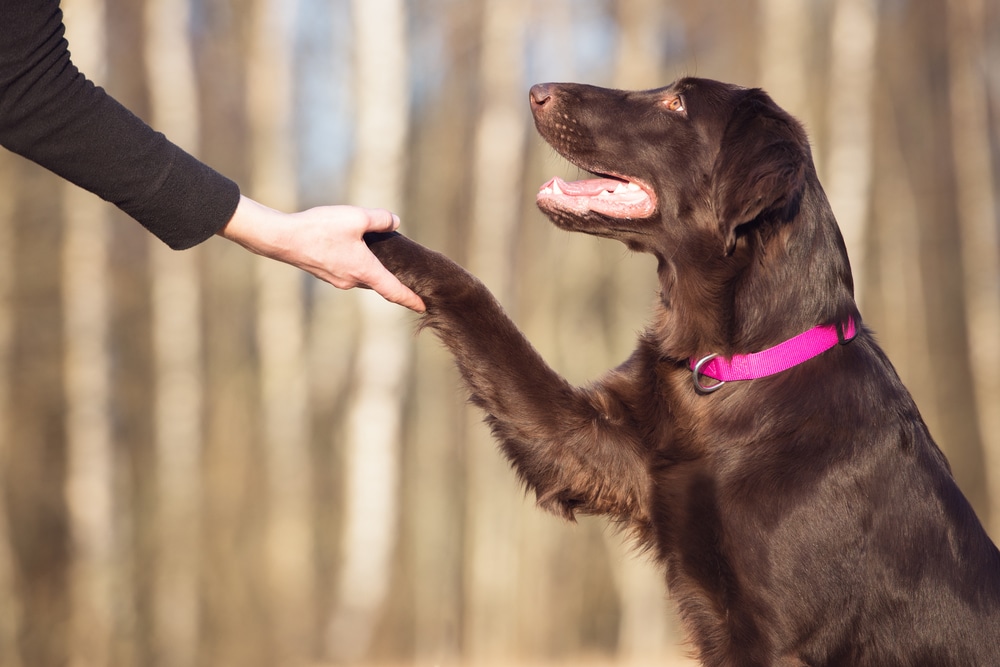Coaching your dog commands can be a fulfilling and invigorating journey for both you and your dog companion. Yet before embarking on this adventure, it’s imperative to determine if you should teach commands to your dog. In other words, is it necessary?
Teaching your dog commands is more than just a necessary component of owning and caring for them. It not only reinforces dependable behavior, but it also serves to create an even stronger bond between the two of you. By teaching specific commands, your dog will know how to respond in any circumstance that may come up, making sure they are always prepared. Knowing how to teach commands can help you create a safe and happy environment for your pup as well.
Table of Contents
Should I Teach My Dog Commands? Is It Safe?
Teaching basic commands is a must for those looking to be responsible pet owners. Not only is it essential for training and control, but it also provides positive benefits for their pet’s mental health.
Knowing how to properly execute commands like “Sit,” “Stay,” and “Come,” can help keep your dog safe and make life easier for you both. Furthermore, teaching commands can give your pup mental stimulation, helping them stay engaged and decreasing their stress levels.
What Commands Can I Teach To My Dog?
Dogs are intelligent animals and can be taught a variety of commands that help them obey and stay safe. With time and patience, you can teach your pup basic commands that will help it confidently interact with people and other dogs. These basic commands include:
- Sit
- Stay
- Come
- Down
- Quiet Or No Barking
- Go To Your Bed
- Leave It
- Drop It Or Give It
- Fetch
How Do I Train My Dog To Respond To Commands?
Training your pup to respond to commands is an essential part of successful pet ownership. With the right methods, you can have a dog that listens and is a pleasure to be around. Here are some tips for teaching your dog basic obedience:
- Start with simple commands like “Sit,” “Down,” and “Stay,” and make sure to reward your dog for following these commands.
- Practice in different environments to ensure your pup will obey you no matter where you are.
- Gradually increase the difficulty by adding distractions or introducing new commands to build your dog’s confidence with a variety of tasks.
- Always remember to praise good behavior to keep the relationship positive.
- Be consistent with your tone, words, and body language when giving commands, so your dog knows exactly what is expected.
- Regular practice will help your pup stay engaged and retain information for more complex commands. With dedication and patience, you’ll have a well-trained pooch in no time!
What Other Methods Of Training Can Be Used In Addition To Verbal Commands?
Training a dog is not only an enjoyable experience but also one that requires careful consideration of different methods for achieving the best results. Verbal commands are just part of this process; there exist plenty more effective training techniques to ensure your dog learns and obeys quickly. These include:
- Clicker Training
- Obedience Classes
- Socialization and Puppy Kindergarten
- Positive Reinforcement Techniques
- Games and Puzzles
- Scent Work Training
- Targeting Training
- Shaping And Luring Techniques
No matter the method, it is important to keep in mind that consistency and patience are key when training any animal. Dogs learn best in short training sessions and with plenty of praise for correct behavior. With consistent reinforcement and lots of practice, owners can be sure their furry friends will become well-behaved pets.
What Are the Benefits of Teaching Commands To My Dog?

Teaching commands to your dog has a range of advantages for both you and your canine companion. Here are just some of the benefits.
Improved Safety
Commands such as “Sit”’ “Stay,” and “Come,” give you better control over your pup in potentially hazardous situations. These trusty commands can also help you call them back if they wander off.
Strengthened Bond
Command training is not only an educational experience for your dog, but it also strengthens the bond between the two of you. Make walks and playtime more enjoyable as your pup gets a sense of purpose.
Improved Behavior
Command training helps your dog focus and understand what is expected of them. This leads to better behavior, such as not jumping on visitors or staying calm in public places.
Advanced Training Skills
Teaching commands help your pup practice the skills needed for more advanced training, such as agility or tricks. It makes building upon their existing abilities easier for you.
It’s a rewarding experience all around! Teaching commands have many advantages that benefit both you and your four-legged friend. Not only will it help keep them safe, but it also strengthens the bond between you, improve behavior, and enhance their training skills. It’s a win-win situation!
In Conclusion: Should I Teach My Dog Commands?
Teaching commands to your dog is highly recommended for all owners. The benefits it offers are numerous and include improved safety, a stronger bond between you and your pup, better behavior, and enhance training skills.
With consistency and patience, you can be sure your furry friend will soon be responding obediently to your commands.
So, are you ready to teach commands to your dog? Have you tried it before? Got any additional tips? Let us know in the comments below!
